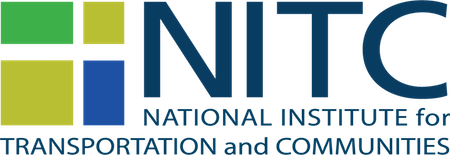The video begins at 3:10.
WATCH THE RECORDED VIDEO
PRESENTATION SLIDES
Miss the presentation or want a look back? You can view the presentation slides here.
OVERVIEW
Every day transit riders ask the same question: when’s the next one coming? To answer this question, transit agencies are transitioning to providing real-time transit information through smartphones or displayed at transit stops.
The proliferation of transit planning and real time arrival tools that have hit the market over the past decade is staggering. Yet with transit ridership on the decline, agencies can’t afford to ignore the importance of providing accurate, real time information to their customers. Real-time transit information improves the reliability and efficiency of passenger travel, but barriers have prevented some transit agencies from adopting the GTFSrealtime v1.0 technology. A new NITC-funded study in May led by Sean Barbeau of the University of South Florida seeks to...
Read moreWatch video
View slides
Summary: The Federal Transit Administration invests in building the capacity and improving the quality of public transportation throughout the United States of America. Under FTA's leadership, public rail, bus, trolley, ferry, and other transit services have reached greater levels of safety, reliability, availability, and accessibility. Come hear the highlights of FTA's impacts and participate in an interactive question/answer session and discussion on career options in public transportation!
Bio: Amy Changchien is the Director of Planning & Program Development of the Federal Transit Administration Region 10 Office in Seattle. Ms. Changchien has been a transportation professional for over 20 years, with experience spanning from highway to transit. In her career, she has worked on projects involving highway operations, Intelligent Transportation System, commuter rail, light rail, streetcar, ferries, and buses. Ms. Changchien holds a bachelor's degree in Civil Engineering and a master's degree in Public Administration from University of Washington.
View slides
Abstract: Our speaker for May 14, 2010 is Gill V. Hicks, Director Southern California Operations for Cambridge Systematics, Inc. For more than ten years, Mr. Hicks served as the General Manager of the Alameda Corridor Transportation Authority (ACTA). The $2.4 billion Alameda Corridor consolidated harbor-related railroad traffic onto a single 20-mile corridor between the ports of Los Angeles and Long Beach and the railroad mainlines near downtown Los Angeles. Mr. Hicks’ responsibilities included overall management of the agency, building consensus, estimating benefits and costs of the project, generating political support, testifying before U.S. Congress, State Legislature, regulatory bodies, city councils, funding agencies and other stakeholders; developing a financial plan, raising funds, coordinating with railroad, trucking, and shipping businesses, and managing contracts for the project.
Mr. Hicks will discuss the major challenges faced by the project, including negotiations with three competing railroads, several municipal governments, utilities, regulatory agencies, contractors, and funding entities. The process for consensus building will be discussed. Major lessons learned will be described, including methods for reducing project risk, keeping on schedule and within budget. Mr. Hicks will also touch on the challenges facing the agency as...
Read moreView slides
If you would like to receive continuing education credits such as PDH or CM, please make sure to complete this evaluation form once you've watched the entire video so that we have a record of your attendance.
Watch video:
Read moreThe video begins at 2:16.
Abstract: Reliance on the automobile for most trips contributes to costly trends like pollution, oil dependence, congestion, and obesity. Germany and the U.S. have among the highest motorization rates in the world. Yet Germans make a four times higher share of trips by foot, bike, and public transport and drive for a 25 percent lower share of trips.
This presentation first investigates international trends in daily travel behavior with a focus on Germany and the USA. Next, the presentation examines the transport and land-use policies in Germany over the last 40 years that have encouraged more walking, bicycling, and public transport use. Using a case study of policy changes in the German city of Freiburg, the presentation concludes with policies that are transferable to car-oriented countries around the world.
Bio: Ralph Buehler is Assistant Professor of Urban Affairs & Planning and a Faculty Fellow with the Metropolitan Institute at Virginia Tech in Alexandria, VA. Originally from Germany, most of his research has an international comparative perspective, contrasting transport and land-use policies, transport systems, and travel behavior in Western Europe and North America. His research falls into three areas: (1) the influence of transport policy, land use, socio- demographics on travel behavior; (2) bicycling, walking, and public health; and (3) public transport...
Read more
